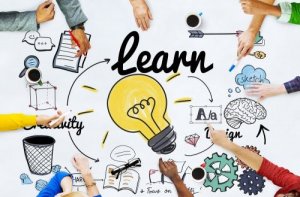Feuerstein's Mediated Learning Experience (MLE) Theory

Today, many experts are still studying and asking themselves the following intelligence-related question: is it innate or acquired? Psychologist Reuven Feuerstein had a very clear answer to this question. Although he didn’t discuss the biological part of human intelligence, he argued that all people have the ability to develop their intelligence through the so-called mediated learning experience.
Reuven Feuerstein and universal cognitive modifiability
A native of Botoşani, Romania, and Ph.D. in Developmental Psychology, Feuerstein dedicated most of his life to education and to people with major learning difficulties. He’s the author of brilliant theories, such as structural cognitive modifiability and mediated learning experience (MLE).
Based on this, he developed the known Learning Propensity Assessment Device along with the creation of modifiable environments.

“Intelligence is not a static structure, but an open, dynamic system that can continue to develop throughout life.”
– Dr. Reuven Feuerstein –
What’s the mediated learning experience (MLE) theory?
Following his experience working with people with minimal education levels, Feuerstein concluded that their performance can eventually change through cognitive processes. In other words, all people can develop their learning potential.
Now, based on this premise, Feuerstein formulated his mediated learning experience (MLE) theory. MLE refers to the quality of the interaction between the learner and the mediator, where the mediator selects, expands, and interprets the student’s learning process.
In other words, the educator acts as a mediator in the teaching-learning process. However, for Feuerstein, mere supervision and interaction between student and teacher aren’t enough to make the mediated learning experience occur. Therefore, a responsible, affectionate, knowledgeable, and competent mediator needs to be the intermediary between the student and the mediated learning experience.
In addition, according to expert Silvia Ester Orrú, for quality mediated learning to occur, the mediator must part from positive intentionality. In other words, from the basis that every human being’s learning potential is modifiable.
“The use of mediated learning as a way of integrating students to their environment consists of the transformation of all stimuli through an educator that orders them, in order to organize them and modify them to ensure a better understanding of the universe that surrounds them.”
– Silvia Ester Orrú –

Advantages of the mediated learning experience
- Awakens the students’ interest in participating in the learning process.
- Enhances student learning, even when they have poor performance.
- It helps regulate and control behavior, as students learn to retrieve previously learned knowledge to use and reason it cohesively.
- Encourages students’ active and collaborative participation, through interaction and motivation suggested by the mediator.
- It originates the psychological individualization and differentiation of each student, as they’re considered active participants of their learning, capable of thinking independently of the rest of the group.
- It helps students focus on reaching their future goals. In other words, the mediated learning experience encourages the search, planning, and achievement of goals in individuals.
- This learning develops divergent thinking in students, as well as intellectual curiosity and originality.
Finally, in order to achieve the cognitive development that Feuerstein exposes in his mediated learning experience (MLE) theory, we mustn’t forget the main idea of this educational philosophy. The mediator must believe in their students’ ability to change, making them see their learning potential.
Today, many experts are still studying and asking themselves the following intelligence-related question: is it innate or acquired? Psychologist Reuven Feuerstein had a very clear answer to this question. Although he didn’t discuss the biological part of human intelligence, he argued that all people have the ability to develop their intelligence through the so-called mediated learning experience.
Reuven Feuerstein and universal cognitive modifiability
A native of Botoşani, Romania, and Ph.D. in Developmental Psychology, Feuerstein dedicated most of his life to education and to people with major learning difficulties. He’s the author of brilliant theories, such as structural cognitive modifiability and mediated learning experience (MLE).
Based on this, he developed the known Learning Propensity Assessment Device along with the creation of modifiable environments.

“Intelligence is not a static structure, but an open, dynamic system that can continue to develop throughout life.”
– Dr. Reuven Feuerstein –
What’s the mediated learning experience (MLE) theory?
Following his experience working with people with minimal education levels, Feuerstein concluded that their performance can eventually change through cognitive processes. In other words, all people can develop their learning potential.
Now, based on this premise, Feuerstein formulated his mediated learning experience (MLE) theory. MLE refers to the quality of the interaction between the learner and the mediator, where the mediator selects, expands, and interprets the student’s learning process.
In other words, the educator acts as a mediator in the teaching-learning process. However, for Feuerstein, mere supervision and interaction between student and teacher aren’t enough to make the mediated learning experience occur. Therefore, a responsible, affectionate, knowledgeable, and competent mediator needs to be the intermediary between the student and the mediated learning experience.
In addition, according to expert Silvia Ester Orrú, for quality mediated learning to occur, the mediator must part from positive intentionality. In other words, from the basis that every human being’s learning potential is modifiable.
“The use of mediated learning as a way of integrating students to their environment consists of the transformation of all stimuli through an educator that orders them, in order to organize them and modify them to ensure a better understanding of the universe that surrounds them.”
– Silvia Ester Orrú –

Advantages of the mediated learning experience
- Awakens the students’ interest in participating in the learning process.
- Enhances student learning, even when they have poor performance.
- It helps regulate and control behavior, as students learn to retrieve previously learned knowledge to use and reason it cohesively.
- Encourages students’ active and collaborative participation, through interaction and motivation suggested by the mediator.
- It originates the psychological individualization and differentiation of each student, as they’re considered active participants of their learning, capable of thinking independently of the rest of the group.
- It helps students focus on reaching their future goals. In other words, the mediated learning experience encourages the search, planning, and achievement of goals in individuals.
- This learning develops divergent thinking in students, as well as intellectual curiosity and originality.
Finally, in order to achieve the cognitive development that Feuerstein exposes in his mediated learning experience (MLE) theory, we mustn’t forget the main idea of this educational philosophy. The mediator must believe in their students’ ability to change, making them see their learning potential.
All cited sources were thoroughly reviewed by our team to ensure their quality, reliability, currency, and validity. The bibliography of this article was considered reliable and of academic or scientific accuracy.
- Ester, S. (2003). Reueven Feuerstein y la teoría de la modificabilidad cognitiva estructural. Revista de Educación, nº 323, p. 33-54. Ministerio de Educación y Formación Profesional, Gobierno de España. Recuperado de: https://www.mecd.gob.es/dctm/revista-de-educacion/articulosre332/re3320311443.pdf?documentId=0901e72b81256ae0
- Feuerstein, R., Rand, Y., Hoffman, M. y Miller, R. (1980). Instrumental Enrichment: an intervention program for cognitive modifiability. Baltimore: University Park Press.
- Gómez, P. (2013). Teoría de la experiencia del aprendizaje mediado del Dr. Reueven Feuerstein: la importancia del maestro como principal mediador del aprendizaje. Universidad Pedagógica Nacional. México, D.F.
This text is provided for informational purposes only and does not replace consultation with a professional. If in doubt, consult your specialist.








